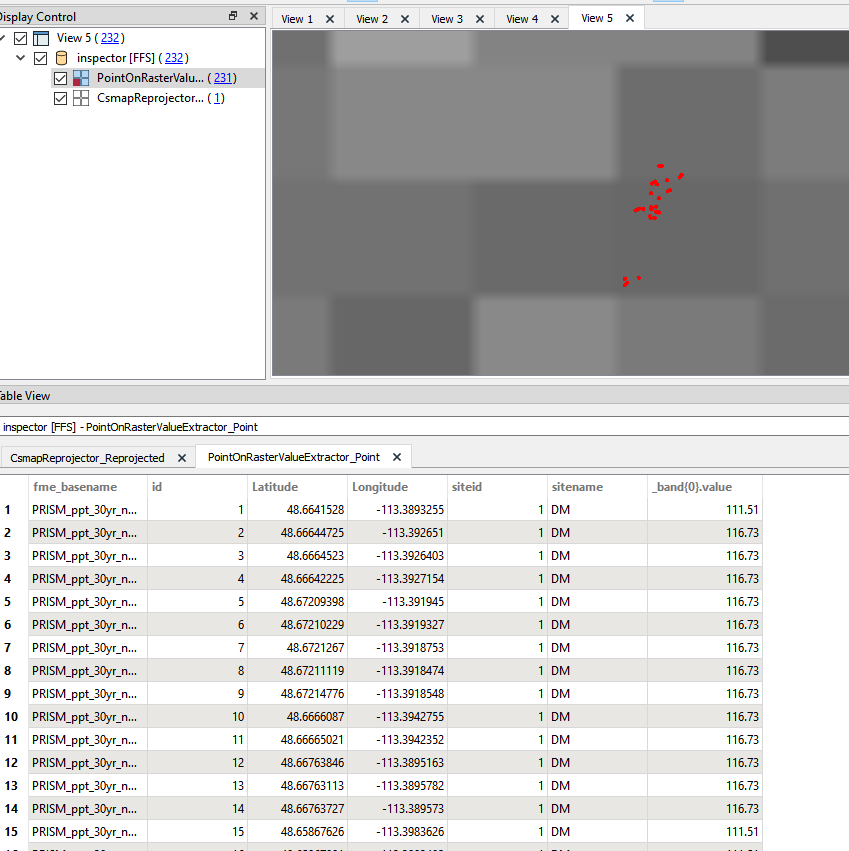It seems straightforward enough using the PointOnRasterValueExtractor. The problem is it is only grabbing one value and putting that in all the points. I am guessing that the secondary files with the tiff may hold that 'value,' but I am unsure. The last screenshot shows the data doing it the slow way through ESRI's geoprocessing tools. Any help would be appreciated.





